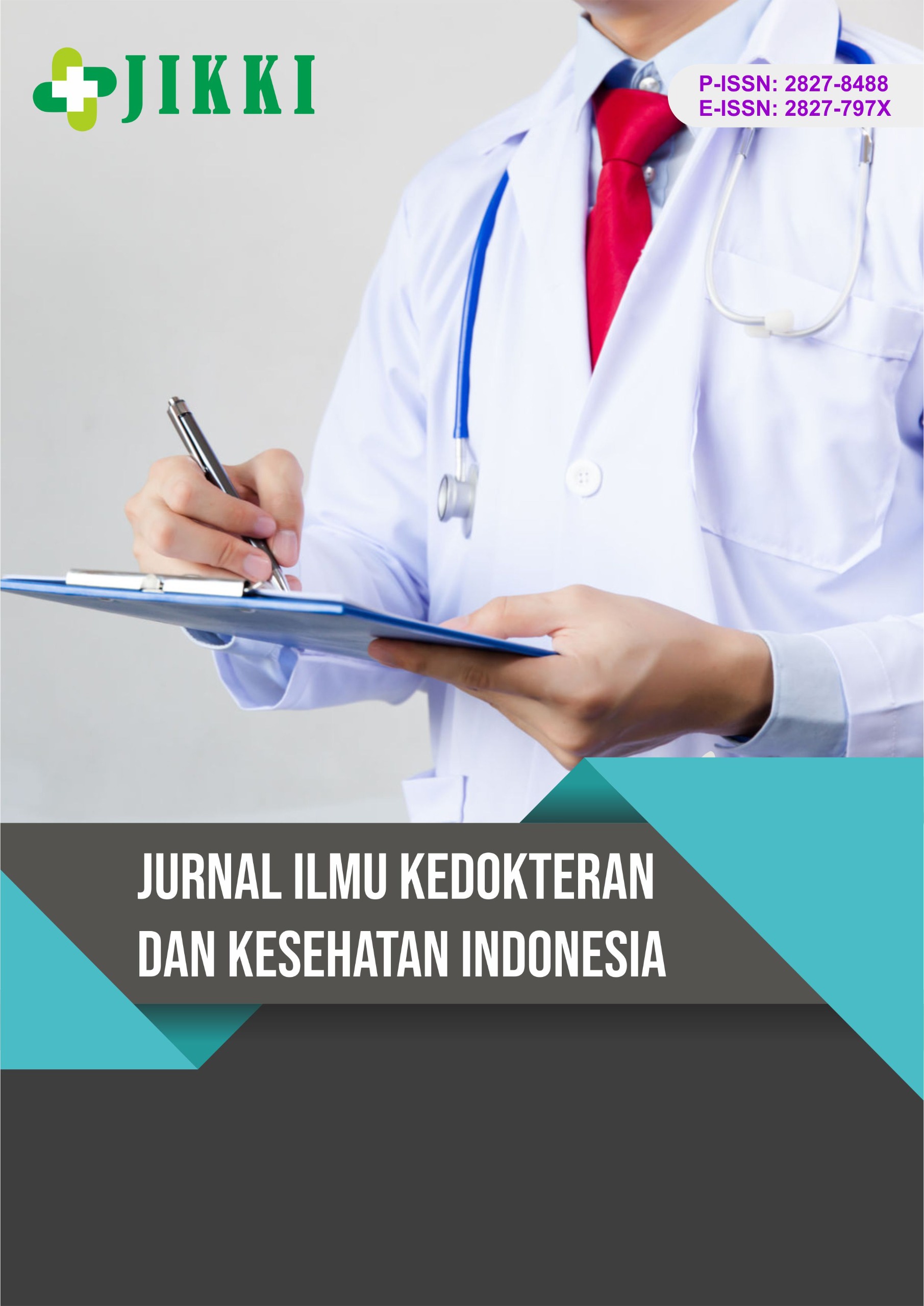Perbedaan Persepsi Tentang Penggunaan Kontrasepsi Implan pada Akseptor Implan dan Non Implan Menggunakan Teori Health Belief Model
DOI:
https://doi.org/10.55606/jikki.v5i3.8212Keywords:
Health Belief Model, Implant contraception, PerceptionAbstract
Implant is one of the Long-Term Contraceptive Methods (LTCM) that still has relatively low popularity compared to other contraceptive methods. In Indonesia, the use of contraceptive implants remains limited. Data from the 2022 active family planning participants in Malang Regency showed that only 8.2% of acceptors used implants (BPS of East Java Province, 2022). The low coverage may be influenced by various factors, one of which is people’s perception of implants. Perception plays an important role in the process of choosing contraception. Individuals who are able to perceive themselves well tend to have greater self-awareness in selecting a contraceptive method that suits their needs (Windarti, 2020). This phenomenon can be analyzed through the Health Belief Model (HBM), which emphasizes the importance of perception factors such as susceptibility, severity, benefits, and barriers in health-related decision-making, including contraceptive use. This study aims to analyze the differences in perceptions regarding implant contraception based on the Health Belief Model. The research employed a comparative design with a sample of 72 respondents, consisting of 32 implant acceptors and 40 non-implant acceptors, selected using the Proportionate Cluster Random Sampling technique. The research instrument was a structured questionnaire that had been tested for validity and reliability. The results indicated a significant difference in perception of implant use between implant and non-implant acceptors, with a p-value of 0.027 (<0.05). The most meaningful differences were observed in the perceptions of susceptibility and severity. Implant acceptors tended to have a more positive perception of implant contraception, whereas non-implant acceptors were more likely to hold negative perceptions. An individual’s perception becomes positive when it aligns with their needs and, conversely, becomes negative when it conflicts with perceived needs. These findings highlight the importance of strengthening education and counseling on implant contraception to improve community perceptions, thereby encouraging greater use of implants as an effective long-term contraceptive choice.
References
Akhmad, R. A. D., Saadong, D., Afriani, A., & Hidayati, H. (2022). Persepsi mempengaruhi rendahnya pemakaian kontrasepsi implan. Jurnal Kebidanan Malakbi, 3(1), 21–27. https://doi.org/10.33490/b.v3i1.518
Becker, M. H. (1974). The Health Belief Model and personal health behavior. Health Education Monographs, 2(4), 324–508. https://doi.org/10.1177/109019817400200401
Glanz, K., Rimer, B. K., & Viswanath, K. (2015). Health behavior: Theory, research, and practice (5th ed.). San Francisco, CA: Jossey-Bass.
Jayanti, F., & Arista, N. T. (2018). Persepsi mahasiswa terhadap pelayanan perpustakaan Universitas Trunojoyo Madura. Competence: Journal of Management Studies, 12(2). https://doi.org/10.21107/kompetensi.v12i2.4958
Kemenkes. (2021). Pedoman pelayanan kontrasepsi dan keluarga berencana. Direktorat Kesehatan Keluarga Kementerian Kesehatan Republik Indonesia.
Kristianti, S., Mediawati, M., & Rohmawati, D. (2020). Persepsi dan minat menggunakan alat kontrasepsi implan di Desa Ngasem Kediri. Jurnal Kebidanan Kestra, 3(1), 32–38. https://doi.org/10.35451/jkk.v3i1.464
Kristina, M., Toyibah, A., & Yudianti, I. (2023). Studi komparasi pemilihan AKDR pada akseptor AKDR dan akseptor implan berdasarkan Health Belief Model. Bima Nursing Journal, 4(2), 84–96.
Maharani, R., dkk. (2018). Buku ajar keluarga berencana dan kontrasepsi. Yogyakarta: Pustaka Ilmu.
Rakhmat, J. (2018). Psikologi komunikasi. Bandung: PT Remaja Rosdakarya.
Rosenstock, I. M., Strecher, V. J., & Becker, M. H. (1988). Social learning theory and the Health Belief Model. Health Education Quarterly, 15(2), 175–183. https://doi.org/10.1177/109019818801500203
Rusady, Y. P., & Zulaikha, Z. (2021). Pengaruh konseling terhadap persepsi tentang kontrasepsi implan di Pustu Lawangan Daya Pademawu Pamekasan. Jurnal Ilmu Keperawatan dan Kebidanan, 12(2), 432–440. https://doi.org/10.26751/jikk.v12i2.1156
WHO. (2019). Family planning/contraception methods. World Health Organization.
Windarti, Y. (2020). Pengaruh persepsi dan minat ibu terhadap pemilihan jenis alat kontrasepsi. Midwifery Journal: Jurnal Kebidanan UM Mataram, 5(2), 134–137. https://doi.org/10.31764/mj.v5i2.1190
Yudianti, I., & Nurhayati, R. (2018). Health Belief Model (HBM) dan keterlambatan rujukan kasus ginekologi. MIKIA: Mimbar Ilmiah Kesehatan Ibu dan Anak, 18–24. https://doi.org/10.36696/mikia.v2i1.33
Yuliati, I. F. (2021). Peramalan dan analisis hubungan faktor penggerakan lini lapangan dalam meningkatkan peserta KB aktif MKJP. Jurnal Keluarga Berencana, 6(2), 35–48
Downloads
Published
How to Cite
Issue
Section
License
Copyright (c) 2025 Jurnal Ilmu Kedokteran dan Kesehatan Indonesia

This work is licensed under a Creative Commons Attribution-ShareAlike 4.0 International License.








